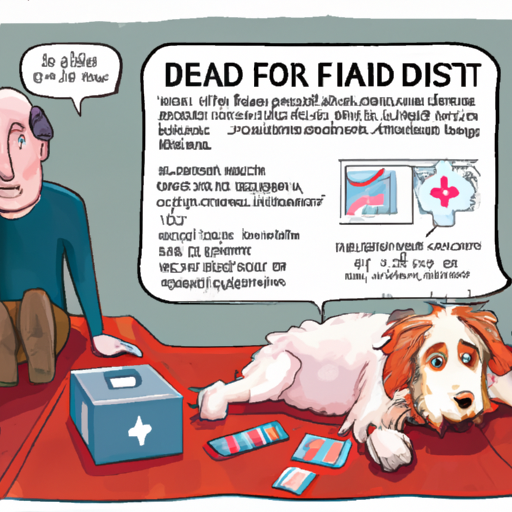Witnessing your beloved pet having a seizure can be a terrifying experience. But, as a caregiver, your knowledge and prompt actions can make a world of difference. This guide will provide you with a comprehensive understanding of seizures in dogs, what you can do during and after one, and how to prevent them.
H2: Understanding Seizures in Dogs
Seizure is a temporary abnormal electrochemical activity in the brain. They can manifest in several forms – from a subtle moment of inattention to a full-blown grand mal seizure. It’s crucial to understand that while seizures are indeed alarming, they are usually symptomatic of an underlying issue, such as epilepsy, liver disease, or brain tumor.
Note: A single seizure is not life-threatening. However, prolonged or recurrent seizures are a medical emergency.
H2: Recognizing the Signs
To effectively help your dog, you’ll need to recognize the signs of a seizure. These can be divided into three stages:
- Pre-Ictal (Aura): Your dog may seem anxious, seek comfort, or hide. This stage can last from a few seconds to a few hours.
- Ictal: This is the actual seizure, which may last from a few seconds to a few minutes. Signs include loss of consciousness, stiffening, jerking, drooling, or loss of bowel control.
- Post-Ictal: Your dog may seem disoriented, temporarily blind, or excessively thirsty. This phase can last from a few minutes to a few days.
H2: What to Do During a Seizure
When your dog is having a seizure, your immediate actions can help ensure their safety.
- Don’t panic. Your dog needs you to be calm.
- Keep your dog away from stairs, furniture, or anything that might cause injury.
- Don’t put your hand in your dog’s mouth. Contrary to popular belief, dogs can’t swallow their tongues during a seizure.
- Dim the lights and reduce noise to help reduce sensory input that may prolong the seizure.
- Time the seizure. If it lasts more than five minutes, contact your vet immediately.
H2: Post-Seizure Care and Prevention
After a seizure, your dog will need care to recover and possibly prevent future seizures:
- Ensure your dog is comfortable and safe.
- Offer water (and perhaps a small meal) as your dog may be thirsty and hungry.
- Monitor your dog closely for a few hours to days.
- Keep a seizure diary, noting the date, time, duration, and any symptoms. This will be valuable information for your vet.
| Prevention Measures | Description |
|---|---|
| Regular Vet Check-ups | Regular vet checks can help identify any underlying health issues early. |
| Medication | If your dog has been diagnosed with a seizure disorder, regular medication is usually necessary. |
| Balanced Diet | A balanced diet can help improve overall health and reduce the risk of seizures. |
| Avoid Triggers | If certain situations, substances, or foods trigger your dog’s seizures, avoidance is key. |
H2: FAQs about Seizures in Dogs
Why do dogs have seizures?
Seizures can occur due to various reasons, including epilepsy, liver disease, kidney failure, toxins, or brain conditions like tumors or inflammation.
Can a dog recover from a seizure?
Yes, most dogs recover from a seizure within a few minutes to a few hours. However, prolonged seizures require immediate medical attention.
Can seizures in dogs be prevented?
While not all seizures can be prevented, regular vet check-ups, a balanced diet, medication (where necessary), and avoiding known triggers can significantly reduce the frequency of seizures.
Is a single seizure harmful to my dog?
A single, short seizure is not usually harmful. However, frequent or prolonged seizures can lead to serious complications and are considered a medical emergency.
Can a dog have a seizure due to stress?
Yes, extreme stress or anxiety can trigger a seizure in susceptible dogs.
Remember, as a caregiver, your calm and informed response can make a world of difference to your furry friend’s health and well-being during such a taxing time.



